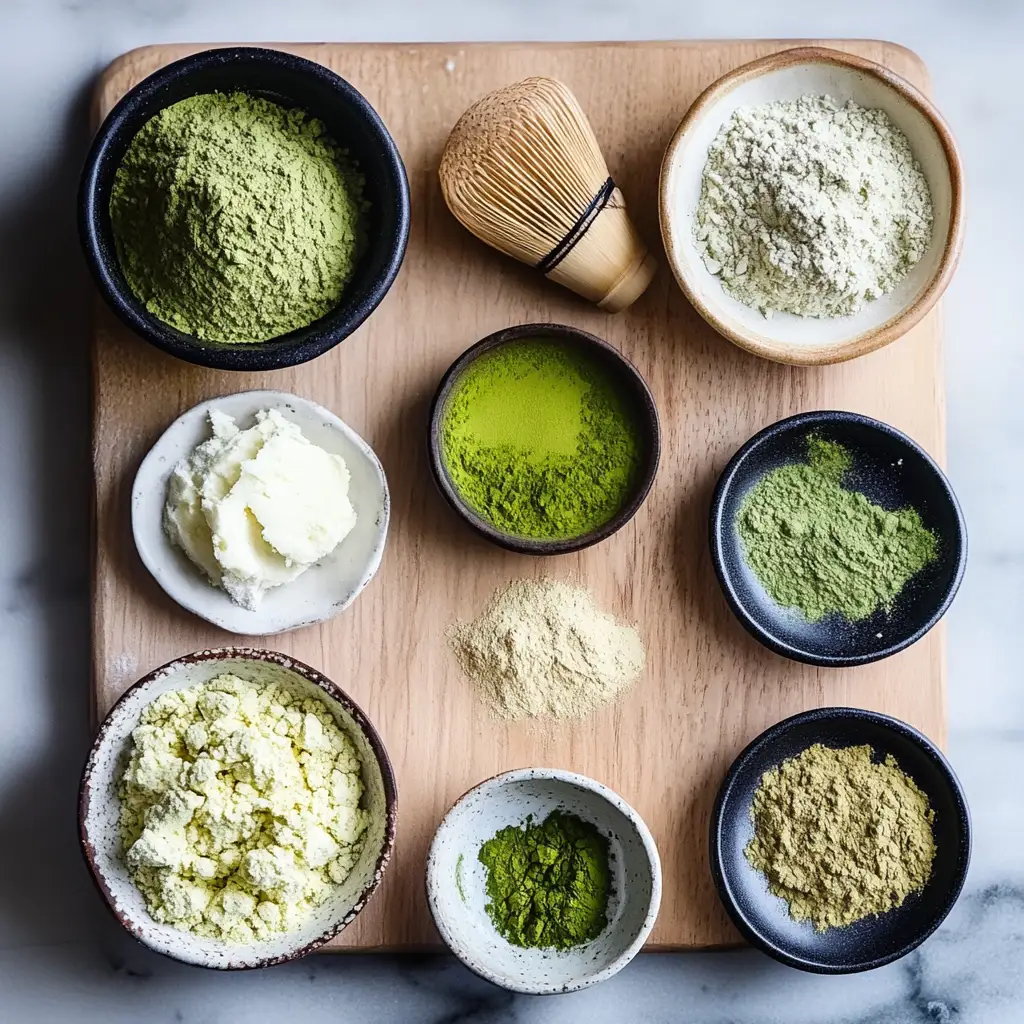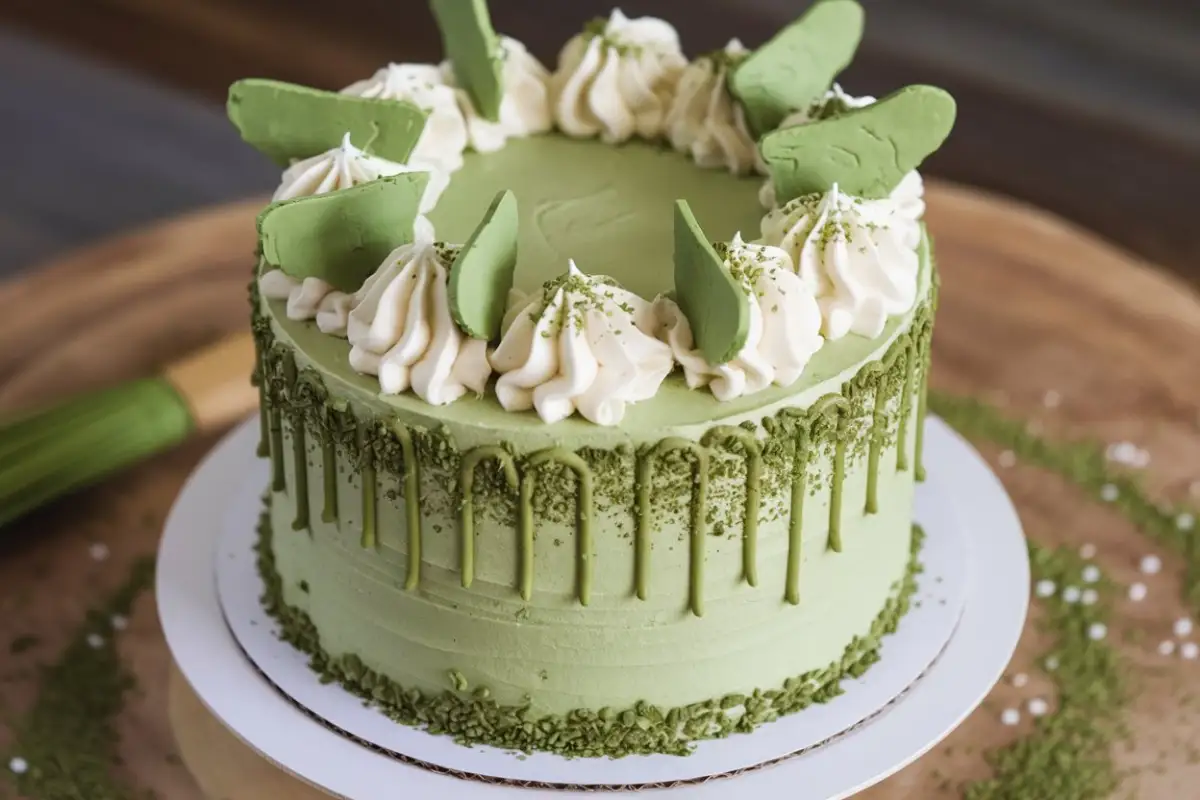Welcome to our Vegan Matcha Cake Recipe guide—a dessert that’s more than just a sweet treat; it’s a celebration of flavor, health, and sustainability. In this Vegan Matcha Cake Recipe, we combine the earthy, slightly sweet taste of matcha with innovative vegan baking techniques to create a cake that’s both indulgent and wholesome. Whether you’re a seasoned baker or just beginning your journey into plant-based treats, this recipe is designed to delight your taste buds while nourishing your body and the planet.
Why Matcha? A Superfood for Your Cake
Matcha isn’t just a trendy ingredient—it’s a finely ground powder made from high-quality green tea leaves. Its antioxidant-rich profile and unique umami flavor make it perfect for baking. Here’s why matcha is the star of this Vegan Matcha Cake Recipe:
- Bright Green Color: Gives the cake a natural, vibrant hue.
- Antioxidant Powerhouse: Loaded with catechins, which help fight free radicals.
- Energy Boosting: Provides sustained energy without caffeine crashes.
- Delicious Earthy Flavor: Enhances desserts with a unique, slightly sweet taste.
This is why adding matcha to your Vegan Matcha Cake Recipe isn’t just about aesthetics—it’s also a nutritious choice.
Why Go Vegan? The Benefits of a Plant-Based Cake
Switching to a vegan cake recipe is more than just skipping dairy and eggs. It’s about embracing a cruelty-free, environmentally friendly, and healthier way of baking.
- Dairy-Free and Egg-Free: Perfect for those with allergies or dietary preferences.
- Better for the Planet: Vegan baking reduces carbon footprints.
- Naturally Moist and Fluffy: Plant-based ingredients create a soft and light cake.
By choosing this Vegan Matcha Cake Recipe, you’re making a delicious, ethical, and sustainable choice.
What is Matcha and Why is it Perfect for Baking?
Matcha isn’t just a trendy drink at your favorite café—it’s a finely ground powder made from specially grown green tea leaves. Not only is it packed with antioxidants, but it also offers a unique earthy flavor that enhances desserts beautifully. Furthermore, matcha isn’t just about taste; it’s about aesthetics too. For instance, its vibrant green color adds a pop of visual appeal, making every slice of cake an Instagrammable masterpiece. So, why is it perfect for baking? Simply put, matcha combines health benefits, flavor, and a striking appearance, which is why it stands out among other ingredients.
The Rise of Vegan Desserts: A Healthy Alternative
The vegan dessert craze is no passing trend; in fact, it has become a delicious movement towards healthier, cruelty-free treats. Moreover, vegan baking swaps traditional ingredients like eggs and dairy for plant-based alternatives that are just as tasty—if not better! Additionally, a vegan matcha cake doesn’t just satisfy your sweet tooth; it’s also kinder to the environment. Therefore, when you choose a vegan matcha cake, you’re making a choice that’s both indulgent and sustainable. Win-win, right?
Ingredients for Vegan Matcha Cake Recipe

Key Ingredients for the Perfect Vegan Matcha Cake
You might be wondering: what makes a matcha cake vegan? Here’s a quick list of what you’ll need:
- Flour: Go with all-purpose flour for a soft, fluffy texture.
- Matcha Powder: The star of the show! Make sure it’s high-quality for the best flavor and color.
- Plant-Based Milk: Almond, soy, or oat milk works wonders here.
- Sweetener: Coconut sugar or granulated sugar keeps it naturally sweet.
- Vegan Butter or Oil: For that perfect moistness in every bite.
- Baking Powder and Baking Soda: These are your go-to ingredients for fluffiness.
Choosing the Best Matcha Powder: Tips and Tricks
It’s important to note that not all matcha powders are created equal. For instance, if you want that rich green tea flavor to shine, always look for ceremonial-grade matcha. On the other hand, if the powder appears dull or tastes bitter, it’s likely culinary-grade, which works fine for smoothies but is not ideal for your cake. Additionally, here’s a pro tip: check the packaging for phrases such as “vibrant green” or “stone-ground.” This way, you can be confident you’re getting the good stuff.
Substitutes for Common Non-Vegan Ingredients
Worried about making vegan swaps? Don’t be! Here’s how to replace common ingredients:
- Eggs: Flaxseed meal or applesauce does the trick.
- Dairy Milk: Plant-based milk is creamy and perfect.
- Butter: Coconut oil or vegan margarine is your best bet.
Step-by-Step Instructions to Make Vegan Matcha Cake
Preparing Your Baking Tools and Equipment
Before you start, gather your tools:
- A mixing bowl (or two, if you’re feeling fancy).
- A whisk (or a stand mixer, if you want to feel like a pro).
- A cake pan (8-inch works best).
- Parchment paper (because nobody likes a cake stuck to the pan).
Preheat your oven to 350°F (175°C) and grease your cake pan. Trust me, prep work makes the process smooth and stress-free.
Mixing the Dry Ingredients: Flour, Matcha, and More
First, let’s get the foundation of your cake ready! To begin, start by sifting your dry ingredients into a large mixing bowl. This step is not only super important but also essential for giving your cake a head start toward fluffiness. Additionally, it ensures all the ingredients are evenly distributed, which helps create a smooth and consistent batter.
Here’s what to add:
- 2 cups of all-purpose flour
- 1-2 tablespoons of matcha powder (adjust for how intense you want the flavor)
- 1 tablespoon of baking powder
- ½ teaspoon of baking soda
- A pinch of salt (because a little contrast makes the sweetness pop!)
Sifting not only gets rid of any lumps but also aerates the ingredients. And trust me, nobody wants a clump of matcha in their slice of cake.
Combining Wet Ingredients for a Fluffy Texture
In a separate bowl, it’s time to mix your wet ingredients:
- 1 cup of plant-based milk (almond, oat, or soy are all great choices).
- ½ cup of melted vegan butter or coconut oil.
- ¾ cup of granulated sugar (or coconut sugar for a more natural sweetness).
- 1 teaspoon of vanilla extract.
Whisk these together until they’re well combined. Here’s where the magic happens: slowly pour the wet mixture into the dry ingredients. Use a spatula to fold them together gently. Overmixing is your enemy here—think of it as softly tucking everything in rather than whipping it up.
Baking the Cake to Perfection
Now, it’s time to turn that batter into a beautiful cake! To begin, pour the mixture into your prepared cake pan. Then, tap the pan gently on your counter a couple of times to release any air bubbles that might be hiding in there. As a result, you’ll achieve a smoother and more even texture in your finished cake.
Bake your cake in the preheated oven for 25-30 minutes. You’ll know it’s ready when:
- The top is slightly springy to the touch.
- A toothpick inserted into the center comes out clean.
Let your cake cool in the pan for about 10 minutes before transferring it to a wire rack. Patience is key—if you rush this, your cake might break apart.
Common Problems and Solutions in Baking Vegan Matcha Cake
Why Does My Cake Turn Out Dense?
One of the biggest issues in vegan baking is density. If your cake feels more like a brick than a cloud, here’s why:
- Overmixing: Stirring too much can knock the air out of your batter.
- Expired Baking Powder or Soda: Check those dates! Fresh leavening agents are crucial for a light texture.
Solution: Mix gently, and always have fresh baking powder and soda on hand.
Fixing Flavor Issues: Balancing Sweetness and Matcha
Too bitter? You might have added too much matcha. Too bland? Maybe you were a little shy with the sugar or vanilla.
Solution: Next time, taste your batter before baking (it’s safe since there are no raw eggs!). Adjust the sugar or matcha until you find the perfect balance.
How to Prevent Cracks or Uneven Baking?
Cracks on top aren’t a disaster, but they can be frustrating. This usually happens when the oven temperature is too high or the cake pan is too small.
Solution:
- Double-check your oven temperature with an oven thermometer.
- Use the correct-sized pan, and don’t overfill it.
Decorating and Serving Ideas for Vegan Matcha Cake Recipe
Frosting Options: Vegan Buttercream and More
A plain cake is good, but frosting makes it great! Whip up some vegan buttercream using:
- ½ cup vegan butter
- 2 cups powdered sugar
- 1-2 tablespoons plant-based milk
- A pinch of matcha for extra flavor and color
Spread it evenly over the top of your cooled cake, and voilà—you’ve just leveled up your dessert game.
Garnishing with Edible Flowers and Fresh Fruits
If you want to take your cake to the next level, you can decorate it with edible flowers, such as pansies or violets, and fresh fruits like raspberries or sliced strawberries. Not only do these additions add a pop of color, but they also make your cake look as though it belongs in a bakery window. Furthermore, these simple yet elegant touches will impress anyone lucky enough to enjoy a slice.
Health Benefits of Matcha and Vegan Desserts
Nutritional Benefits of Matcha in Baking
Matcha isn’t just a pretty face in the baking world; it’s a nutritional powerhouse. Here’s what makes it special:
- Antioxidants Galore: Matcha is rich in catechins, which help fight off free radicals. Think of it as a superhero for your cells.
- Energy Without the Crash: Unlike coffee, matcha gives you a steady energy boost, thanks to L-theanine.
- Detox in a Slice: With its natural chlorophyll content, matcha is known for its detoxifying properties.
So, every bite of your vegan matcha cake isn’t just delicious—it’s doing some good for your body too.
Why Vegan Cakes Are Better for Your Health and the Planet
Switching to vegan baking isn’t just a trend; it’s a thoughtful lifestyle choice. Here’s why:
- Cholesterol-Free: No eggs or dairy means no cholesterol, making it a heart-healthy option.
- Lighter on the Planet: Producing plant-based ingredients uses fewer resources and emits less CO₂ compared to animal products.
- Gentler on Your Body: Many people find vegan desserts easier to digest, especially those with lactose intolerance.
In short, a vegan matcha cake isn’t just good for you—it’s good for the planet.
Frequently Asked Questions (FAQs)
Can I Use Gluten-Free Flour for This Recipe?
Absolutely! You can substitute all-purpose flour with gluten-free blends. However, make sure the blend includes xanthan gum or a similar binder to ensure the cake holds together. Pro tip: Reduce the baking time slightly to prevent dryness.
How Long Can I Store Vegan Matcha Cake?
If you don’t devour it immediately (we wouldn’t blame you!), here’s how to store it:
- Room Temperature: Keep it in an airtight container for up to 2 days.
- Refrigerator: Extend its life to 5-7 days by storing it in the fridge.
- Freezer: Wrap individual slices in plastic wrap, then foil, and freeze for up to 3 months.
When you’re ready to enjoy, let it thaw at room temperature, and it’ll taste as fresh as the day you baked it.
Conclusion
Embracing Vegan Baking with Vegan Matcha Cake Recipe
And there you have it—a complete guide to mastering our Vegan Matcha Cake Recipe. By blending the vibrant flavor of matcha with the creativity of vegan baking, you’ve learned how to create a dessert that is both delicious and environmentally friendly. Whether you’re experimenting with new ingredients or perfecting your technique, this Vegan Matcha Cake Recipe offers a fun and healthy way to impress your friends and family. Remember, baking is all about exploration and joy, so grab your whisk, preheat your oven, and let the matcha magic begin!

